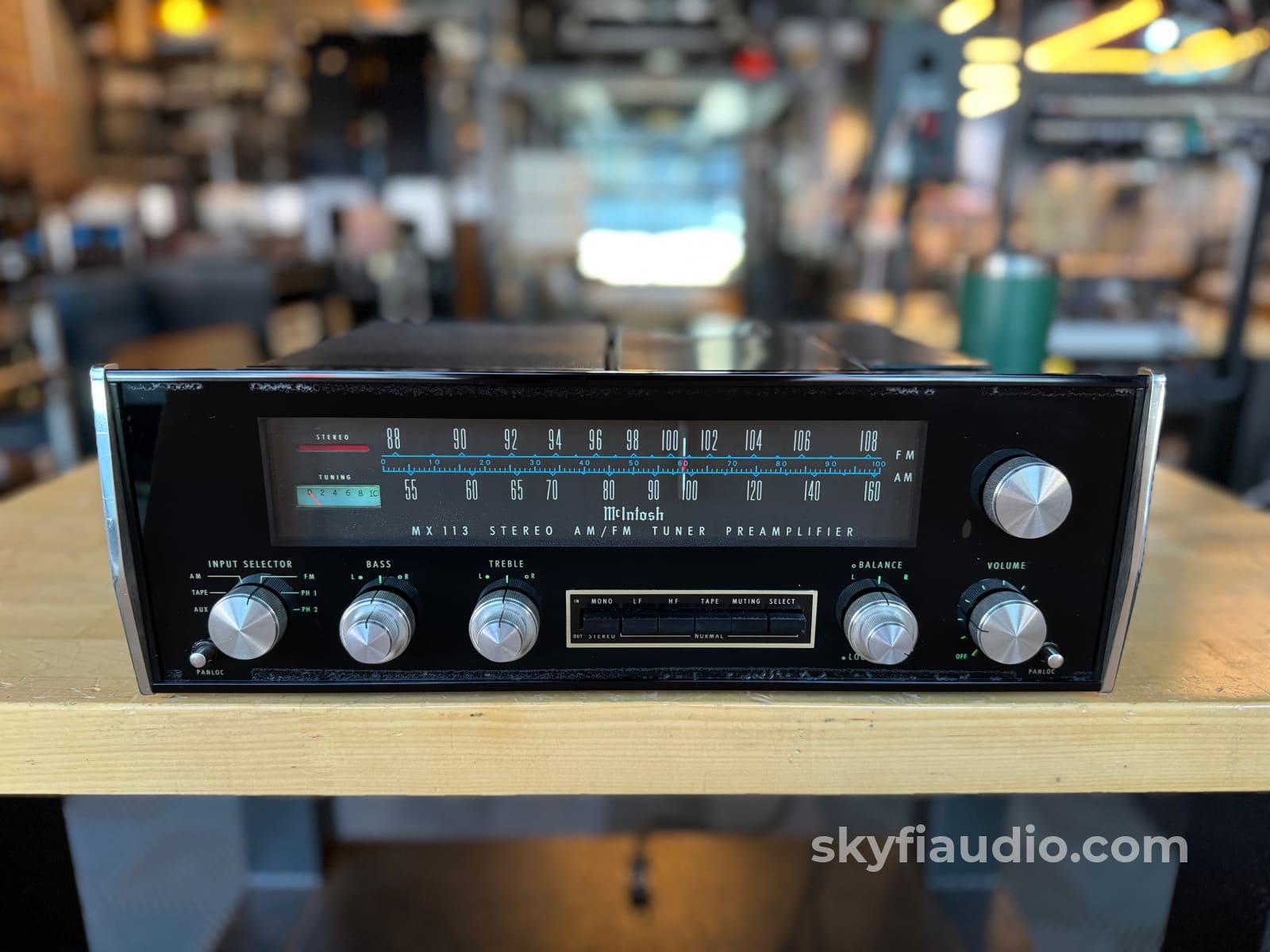
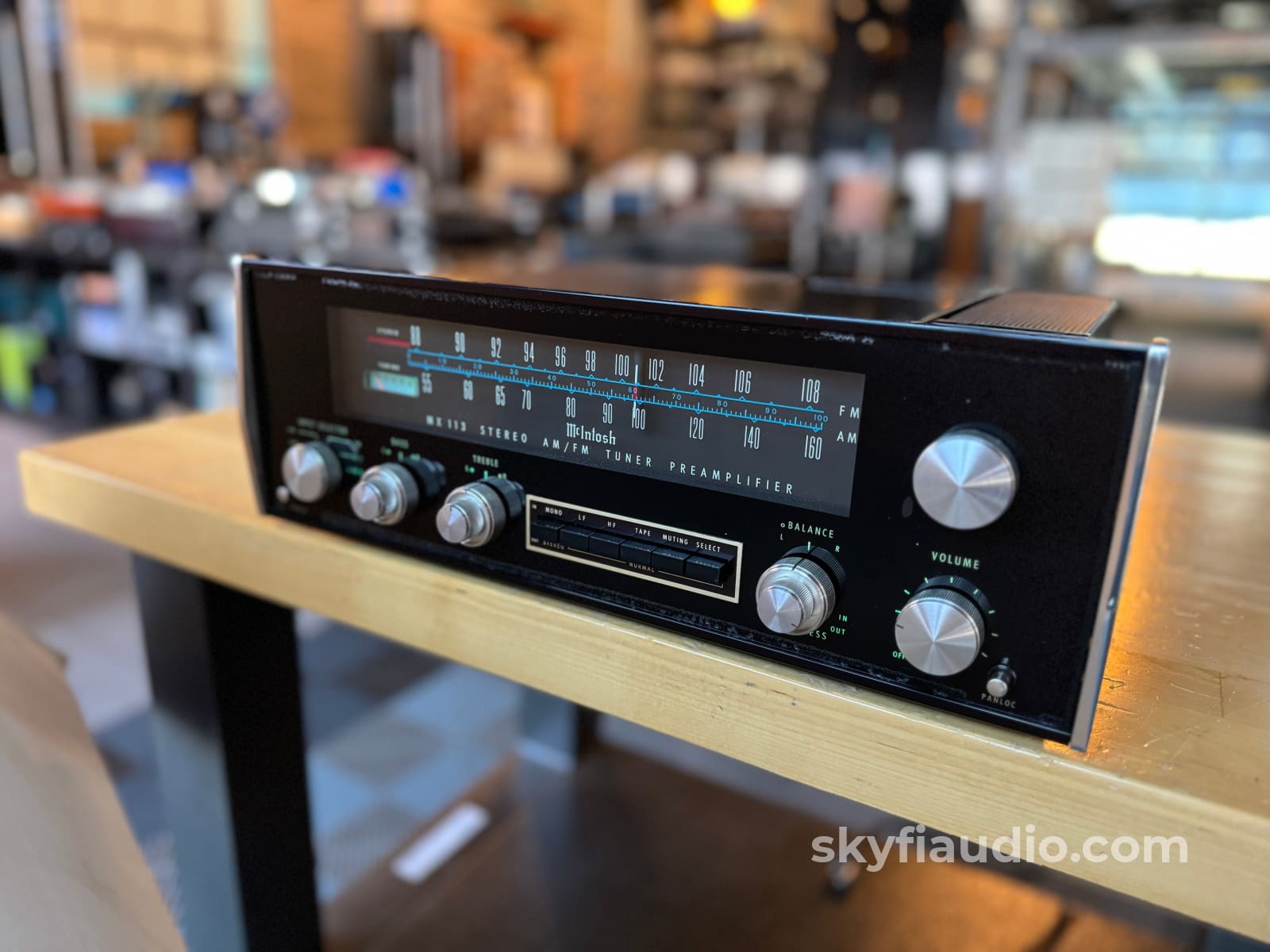
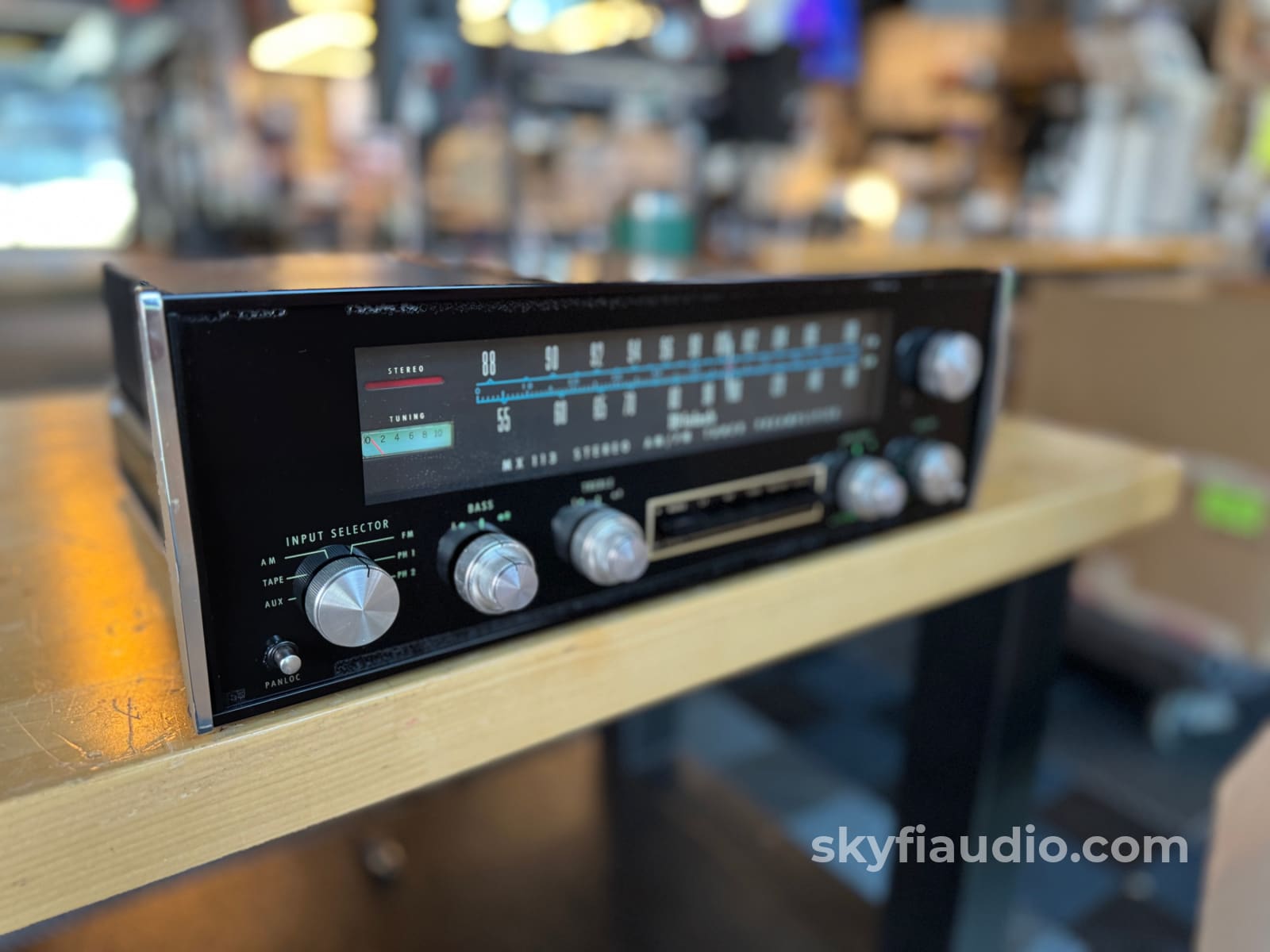
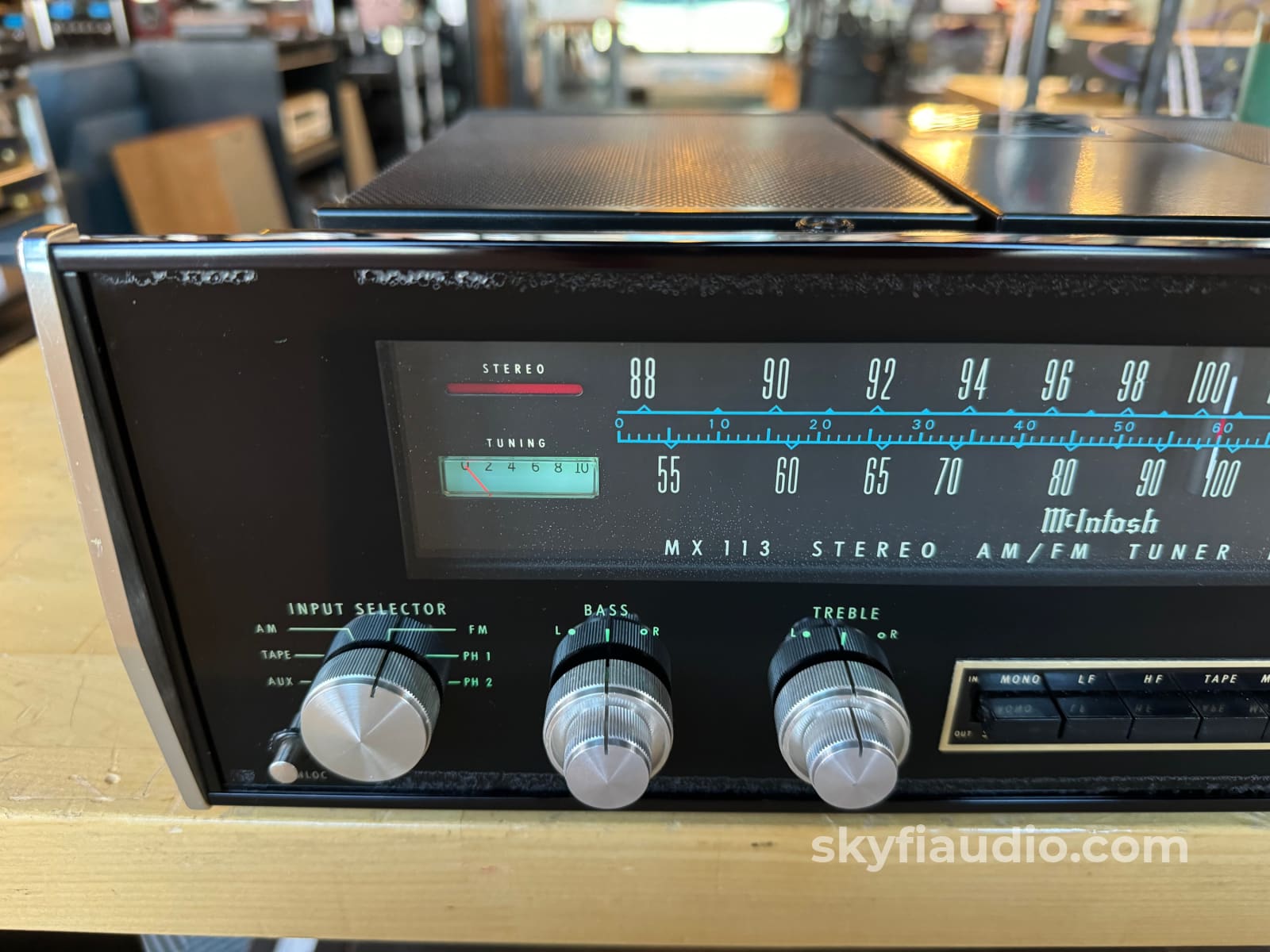
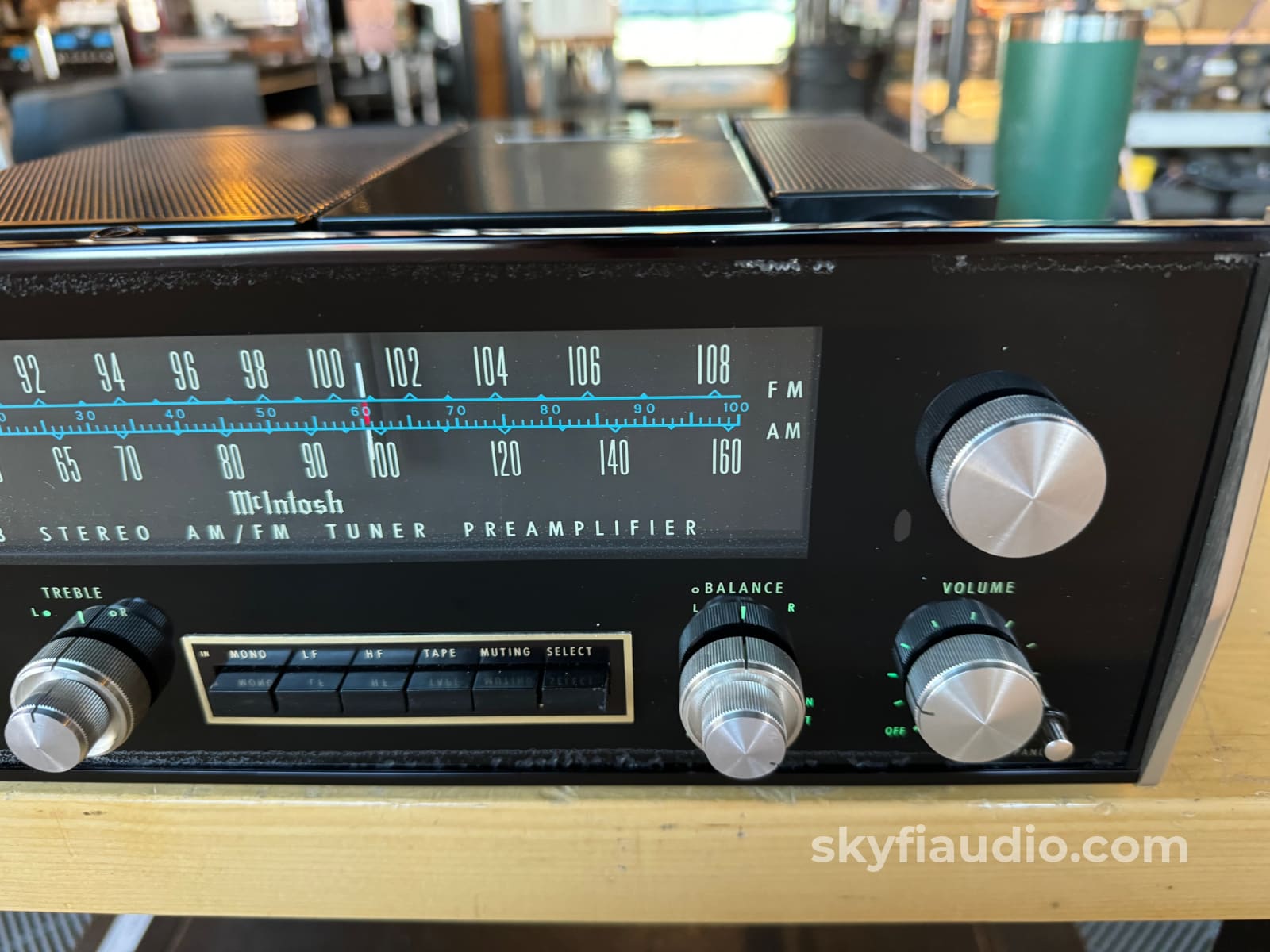
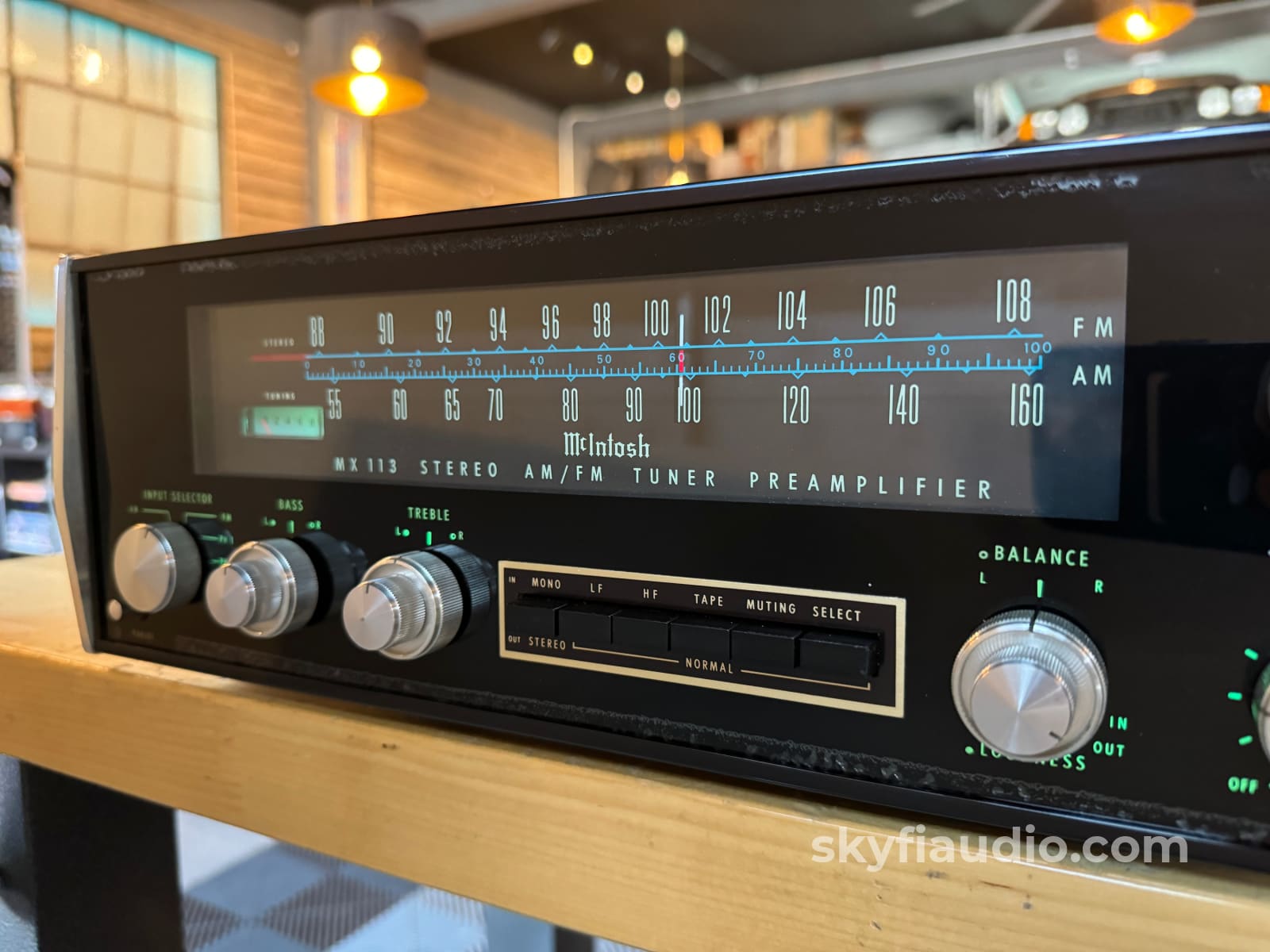
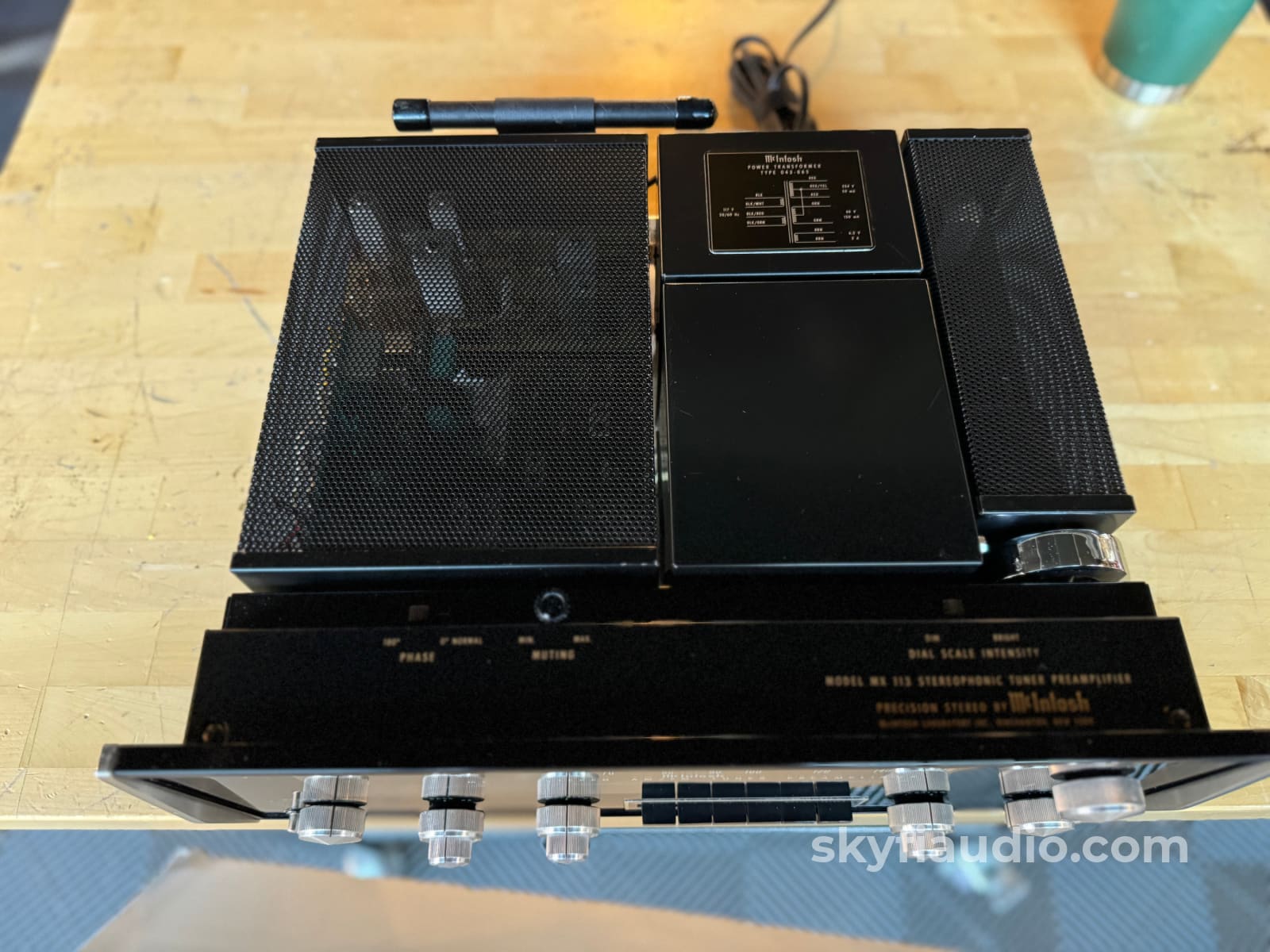

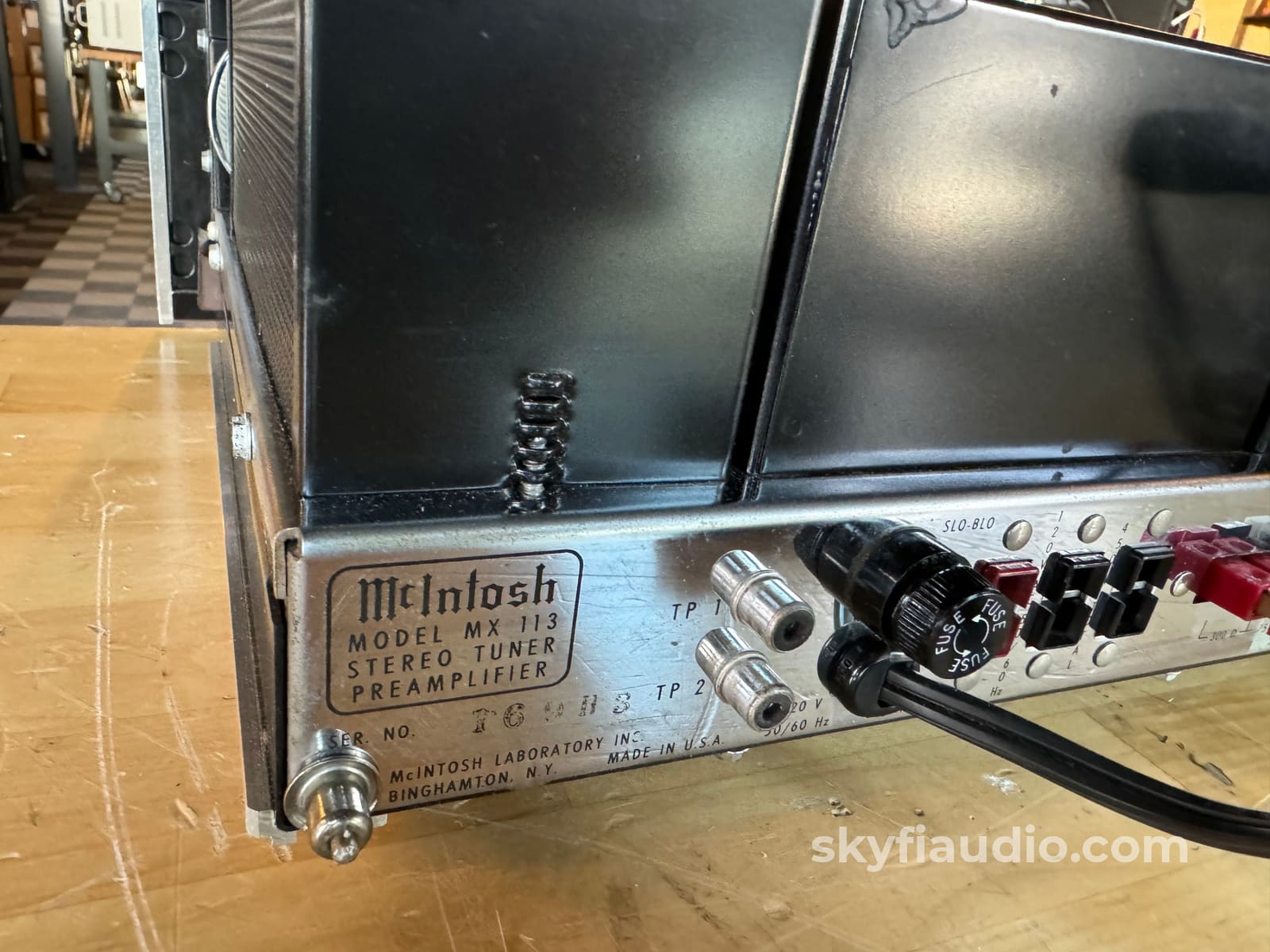
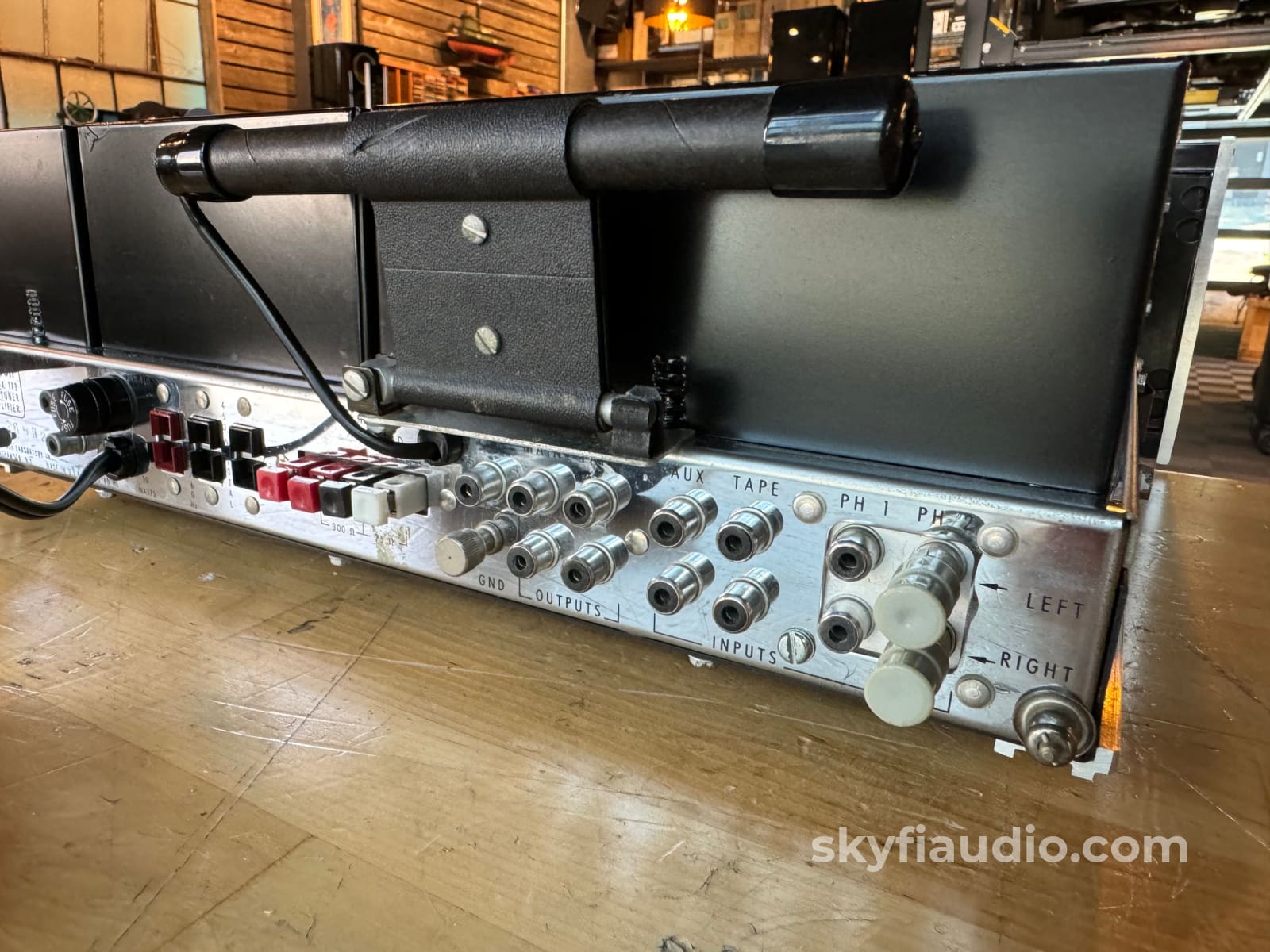
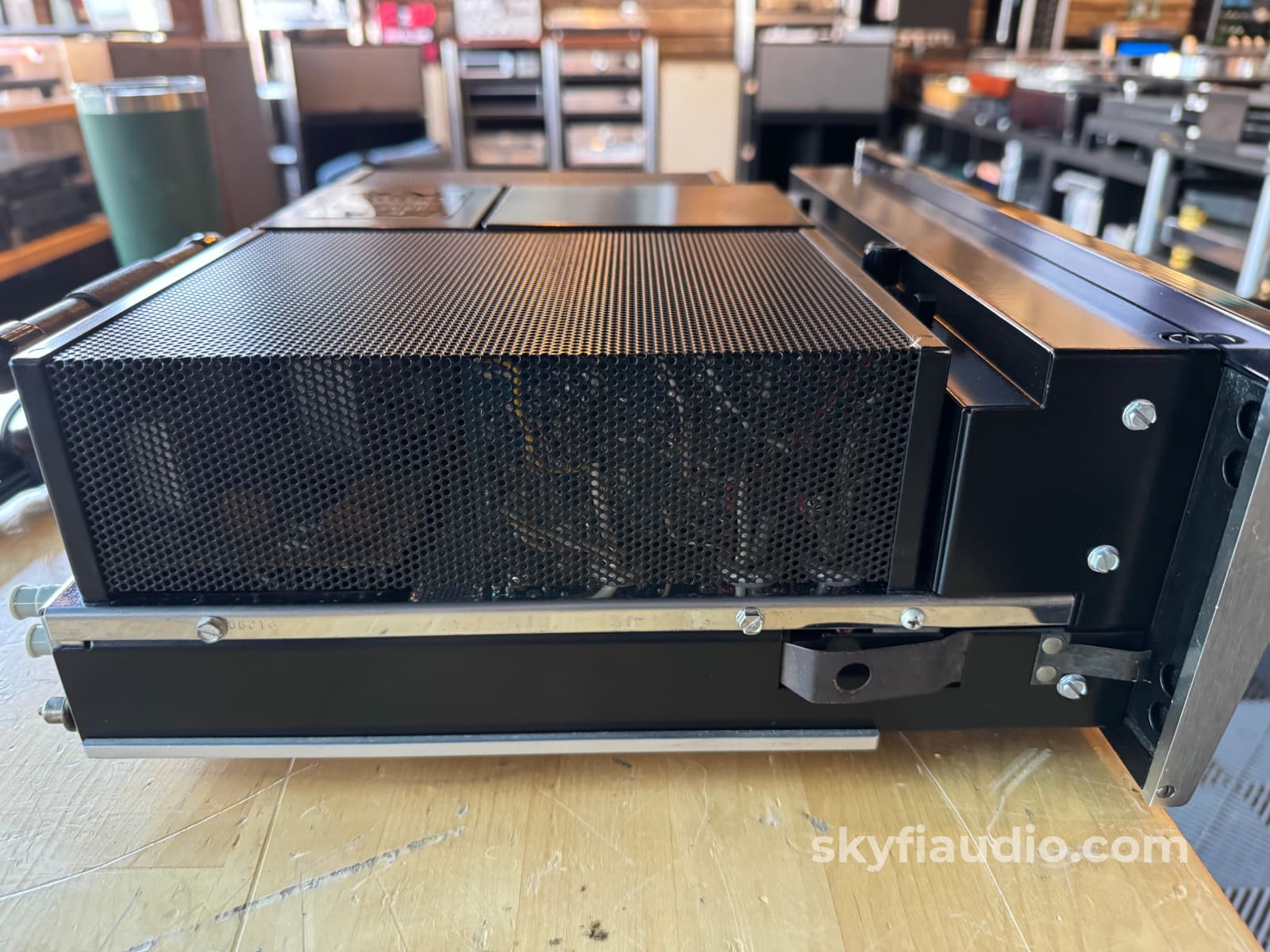
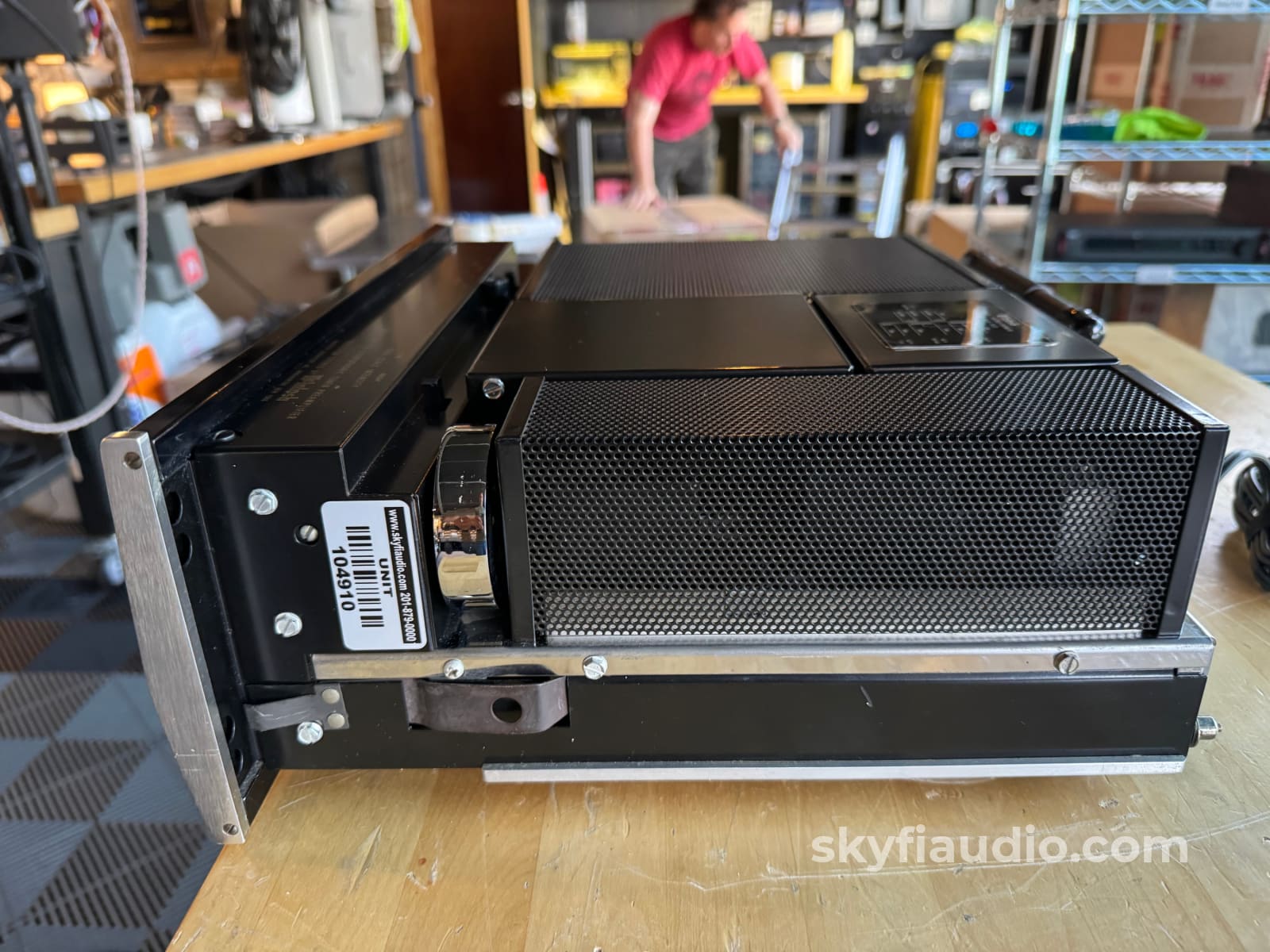
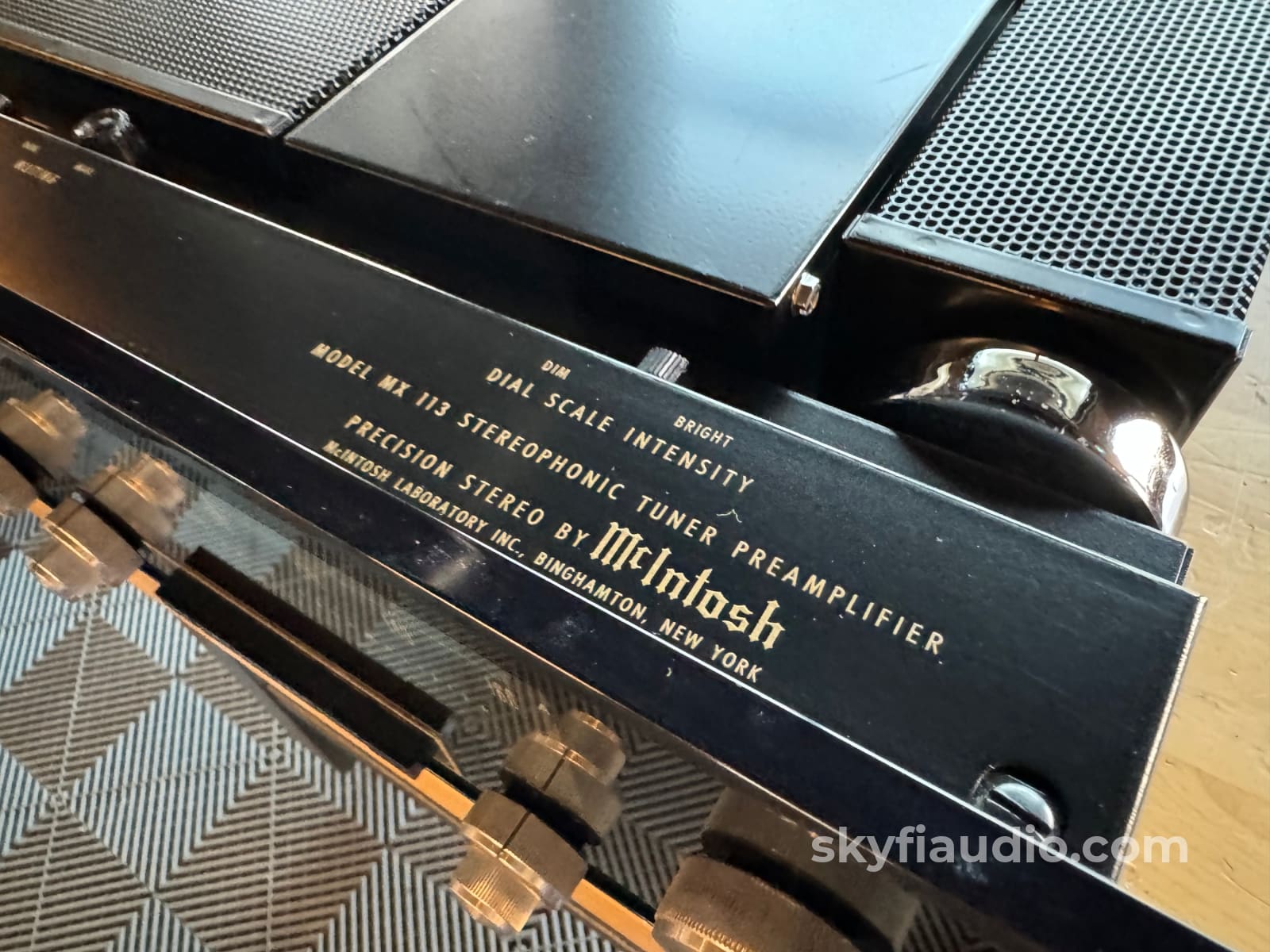
McIntosh MX113 Tuner Preamplifier - SkyFi Serviced
Free Shipping on Most Electronics - Excludes Speakers and Items Requiring Freight - Contiguous U.S. Only
Pickup currently unavailable at SkyFi 479

McIntosh MX113 Tuner Preamplifier - SkyFi Serviced
SkyFi 479
479 South Broad Street
Glen Rock NJ 07452
United States
General:
This combination tuner and preamplifier is a versatile vintage McIntosh piece.
Seems to be as capable and feature rich as the venerable MX110, but with solid state rather than tubes and the addition of the AM band. It's also much less complicated in design and execution.
Two phono inputs are also a nice feature.
Cosmetically it fits the bill: large backlit tuning meter, glass front faceplate, and easy to use buttons and knobs.
Controls are just what you need: input selector, volume, balance, and tone controls.
SkyFi Cosmetic Notes:
This MX113 is very clean overall but does have some glass blemishes. There is a rear paint lift to the left of the volume control which causes an oval shaped light section. The top and bottom edges of the glass also show fine bubbles and tape marks which is typical for units of this vintage (early 1970's).
SkyFi Technical Notes:
SkyFi Serviced - This unit is all original electronically. We cleaned all of the controls, replaced the tuning dial cord, and aligned the FM tuner. The power cord was also replaced.
Brand Background:
McIntosh Laboratory is an American manufacturer of handcrafted high-end audio equipment based in Binghamton, New York. The company was founded in 1949 by Frank McIntosh. The company designs and produces audio amplifiers, stereo tuners and other consumer electronics products.
Ownership:
Second Owner
Connections:
RCA Inputs and outputs, 75 and 300 ohm Antenna connections, AC power plugs
General Sound:
Neutral sound with little to no coloration
Cosmetic Condition:
8/10 = Very Good. Excellent front faceplate, one minor flaw on chassis side or top. See our detailed rating description here.
Working Condition:
Working perfectly and tested in our lab and listening room.
Included:
Unit with captive power cord.
Packing:
Will be packed using our highly developed in-house process and custom packing materials.Specs:
Frequency response: 20 Hz to 20 kHz
Total harmonic distortion: 0.1%
Gain: 62dB (MM), 20dB (line)
Input sensitivity: 2mV (MM), 250mV (line)
Signal to noise ratio: 72 dB (MM), 85 dB (line)
Output: 250mV (line), 2.5V (Pre out), 10V (Pre out Max)
Dimensions:
16 (W)" x 5 7/8" (H) x 13" (D)
Weight:
26 lbs.
Approximate Age:
1971
Link to Manual:
Click Here
Recommended Cables:
Kimber Kable - RCA Interconnects - Better
Kimber Kable - Phono Interconnects
Testing Process:
We start with a visual inspection of all internal components to make sure that there are no signs of heat stress or damage. Capacitors are checked for telltale signs of predictive failure including bulging, shrunken wrappers, or physical leakage. We also inspect the PCBs for discoloration from resistors or transistors that may have been running hot. On vintage units we often spot check select capacitors for value and ESR.
When we first power on a preamplifier we connect its RCA output to a Sencore PA81 Power Analyzer which simulates real world loading conditions and gives us an oscilloscope interface.
The first order of business is checking that the volume control works smoothly throughout its entire range with acceptable channel balance. This is accomplished by feeding a 1 KHz sine wave into one of the preamp’s line level inputs while monitoring the preamp’s output on an oscilloscope.
We then switch to a 1 KHz square wave to test the tone controls, loudness function, and filters where applicable. During this step we are watching for equal alteration of the test signal by both channels. This also helps us identify dirty controls that will need treatment.
Once the basic line stage functions are verified, we test each input individually. This is especially important for devices that use relays to select their sources. If the preamp is equipped with a phono stage we test that as well. We use an inverse RIAA filter which allows us to feed a reference test signal into the phono input with the proper RIAA equalization and level. A square wave or sine sweep is used to verify that the device’s phono stage is faithfully reproducing the RIAA curve. If the preamp under test has balanced inputs and/or outputs these are tested as well.
We finish up our bench testing with a listening test with our bench amplifier and reference speakers. During this test we check for hum or hiss that may not have shown up in earlier testing. We also check that all of the tone controls and filters perform as expected.
If the preamplifier has remote control functions these are also tested. Preamps with tube circuits or complicated power supply topologies are connected at our long term test rig for extended stress testing under real world conditions.
Choose options













